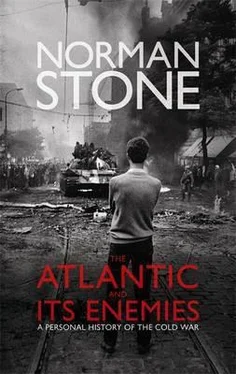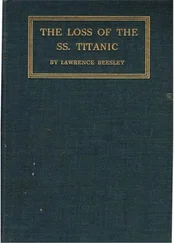There was more. Helmut Schmidt had a sense of strategy, that Germany could be a model for East and West alike, and the country could take a lead in Europe. Here, he encountered France. The decline of the dollar maybe made some opening for an alternative world currency, the euro. However, there were severe difficulties. True, there was a successful economic community, but the economies were quite different, and England especially, where property had a preponderant part, and there were worldwide interests, did not fit.
French and German budgets were very different: in France deficits were second nature, whereas in Germany the Bundesbank had its rules and could operate independently, to encourage saving. The Common Agricultural Policy took up almost all of the European budget (a uniform fraction of the value added tax, itself varying from place to place) and if the franc went down against the Mark then there were problems as regards adjustment of the sums to be paid to farmers in the way of subsidies. In the end, a European common currency could just mean Germans paying Frenchmen to do nothing, and the British were as usual in the middle as regards the dollar. Even Helmut Schmidt shook his head at the complications.
The Germans went doggedly on, trying to find some formula for sensible foreign exchange. This really boiled down to some scheme by which the German taxpayer would pay for it, and in 1979 the French graciously agreed: a European Monetary System was founded, authorizing governments to draw unlimited credit to defend their currencies. Schmidt called this ‘part of a broader strategy for political self-determination in Europe’, and then had a battle with the Bundesbank, which would have in effect to create inflation in Germany in order to pay for irresponsible finance in France and Italy. The decreed rates, originally variable only by small percentages, had in the event to be widened, and there were also controls on capital movements — all of this a breach of the free-trade rules. In the early 1980s France even had a preposterous rerun of the Popular Front, and controls on ‘capital’ meant, for a time, that travellers could not take cash abroad. The bourgeoisie then re-enacted the suitcase-to-Switzerland part of the French historical scenario. Early in 1983 this farce was stopped, and two Frenchmen of guile, Jacques Delors, and his Treasury secretary, Michel Camdessus, were able to point to the high unemployment, the high inflation and the general bankruptcy of state concerns as evidence that ‘Europe’, rather than the go-it-alone Popular Front line, was the answer.
By the turn of 1978-9 the conviction grew that international co-ordination was not possible, given the weakness of the dollar. Trade would suffer, and inflation would rise. That summer, 1978, the dollar fell, interest rates rose, and Carter imposed wage-price stops. He organized swaps of credit, and issued US bonds denominated in yen and DM. This was designed to help the ‘real’ economy — thought to be in good condition — to ignore the financial fluctuations, held to be ‘unreal’. Poor Carter was unlucky. The world was about to be hit by a second oil shock. Late in 1978 Iran boiled over. Here had been a sort of showcase of modernization. The rulers of Iran had looked to the example of Atatürk’s Turkey in the past, a country where the alleged or real backwardness of Islam had been overcome. Rulers of Iran had a history of misunderstanding Turkey. Atatürk had not really persecuted Islam at all; he had tried to limit the excesses of religion where its ambitions to control the State, and education, were concerned. The Turkish state had also been honest, whatever its mistakes. The Shah of Persia broke both of these rules. Besides, Turkey had no raw materials to speak of, and money was scarce: austerity reigned. In Iran money in enormous quantities poured out of the ground, in the form of oil, and the Shah became for a decade or so the figure of which his title, ‘King of Kings’, spoke. The great of this world paid him court. His self-understanding caused him to look down on assorted Arabs as wild tribesmen; and Persians by tradition also regarded Turks with much resentment, because (as to a degree with the Hindu nationalists on the subject of the also Turkic Moguls) they were alleged to have thwarted the otherwise obvious course of the great and Aryan Persian civilization towards the patterns of the West. In fact (a fact very frequently denied) a good third of his subjects were Azeri Turks. The Shah did not regard them with much favour. He had launched a gaudy programme of modernization, expecting (a mistake much made elsewhere) that Islam would vanish once Moslems understood that the world offered rewards for those who abandoned the rules of a very strict religion. Why bother with chastity and virginity tests in an age of contraception? Money was spent — most grotesquely, on a ceremony at the ancient city of Persepolis, where the King of Kings sat on a golden throne and dispensed patronage to an assortment of academic specialists and emissaries of the world. Money was also stolen. Teheran acquired huge traffic jams and vast concrete buildings. Western parasites arrived, middlemen of middlemen. An inflation got under way, which left the bazaar people, with their habits of thrift, of saving even empty jars and used boxes, impoverished, while the speculators were enriched. Part of the educated middle-class youth turned Communist, and the Savak, the secret police, did not treat them gently. They took up an alliance with the Islamic opposition, and they, too, suffered from a patronizing arrogance, leading them to see these people as just infantry fodder for a revolution that would soon turn Communist — an illusion that the then Soviet advisers also shared and promoted. Strikes and demonstrations began. The final push came from Carter. Persuaded that the Shah’s regime was too oppressive, that America’s mistake in the past had been to alienate the Castros and Allendes through CIA action, he encouraged the Shah to hold back. In the same way, his official representative at a human rights gathering had solemnly stood up and apologized for his country’s handling of Allende and Chile. And so the Shah was overthrown. But his successors were not Communist at all. Over the turn of 1978-9, after various governments had passed in and out, the Ayatollah Khomeini took over, a grim, elderly figure whose prescription was theocracy, the Rule of Saints. The Saints manifested themselves in mobs of students, in gruesome executions, in parades of black-garbed women vociferously demanding that Westernization, in particular the ways of ‘satanic’ America, should be put down. This left the Communists nowhere: they — who after all did represent women’s rights and much else that Islam did not wish to see — received as much persecution as the rest, if not more. The Western oil companies, where they did not at once leave, were expelled, subject to persecution or worse. Accordingly, oil prices went up all of a sudden: they doubled. Another version of the troubles of 1973?
To start with, paradoxically, the dollar rose in value because in times of trouble the world, including Iranian Islamists, used it as money of last resort. Dollars also flowed back to the USA, again for reasons of safety. Gold rose from $200 per ounce to $875 in 1979 as the Middle East produced crises — the Iran hostages affair, and then the Soviet invasion of Afghanistan. Carter himself had somewhat turned, appointing William Miller of the Fed to the Treasury and Paul Volcker of the New York Fed to run the American equivalent of a central bank. There was to be a meeting of the IMF at Belgrade late that summer. Volcker received lectures from Helmut Schmidt and once returned to the USA that October he announced that the defeat of inflation would be the Fed’s main target. Interest rates would rise as much as necessary, and there would be direct control of bank reserves. American opinion had been the most important factor, but it also mattered that the Germans were rebelling. After all, at the Bonn summit in 1978 there had been a great deal of resentment of the Americans’ ways, and even threats as regards trade; there were large imbalances as states reacted differently to the second oil shock, and the Europeans’ Exchange Rate Mechanism had been called into existence to provide for some stability in a world dominated by the fecklessly managed dollar.
Читать дальше












![Edward Ellis - Adrift on the Pacific - A Boys [sic] Story of the Sea and its Perils](/books/753342/edward-ellis-adrift-on-the-pacific-a-boys-sic-s-thumb.webp)